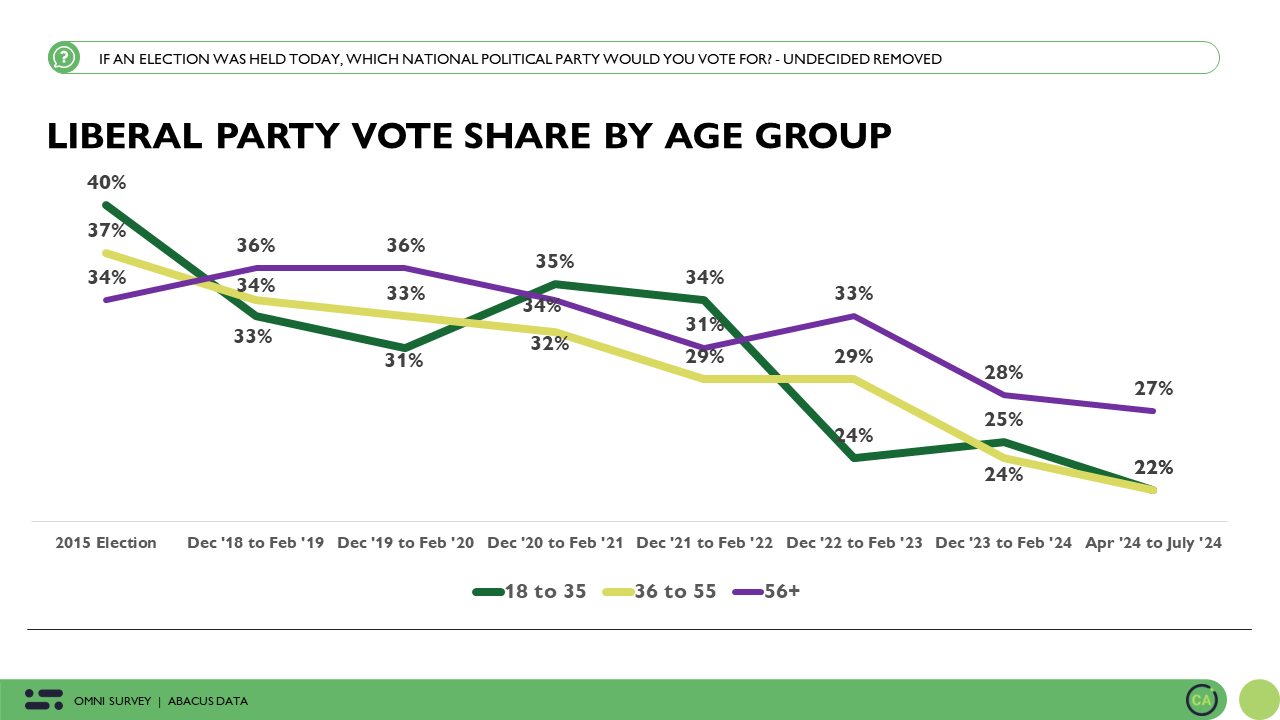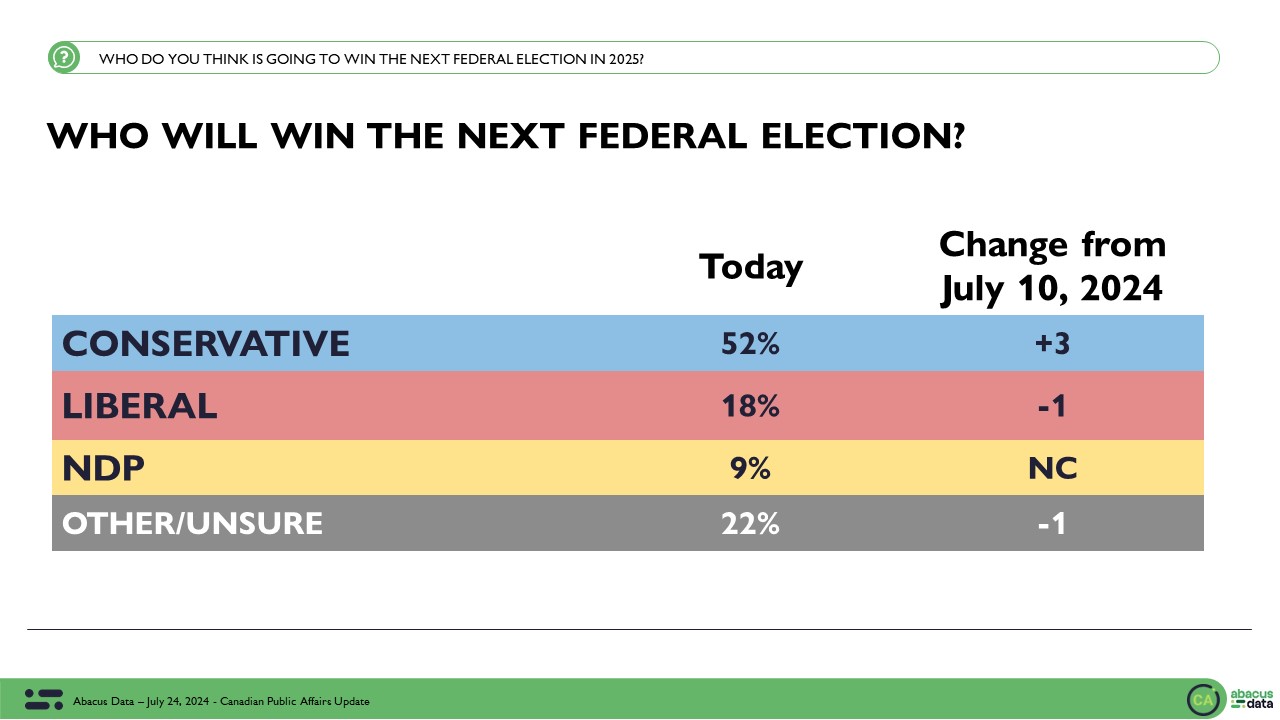Election 2015 started as a three party race. Countdown to 2019 begins with the NDP well back.
September 20, 2018
A year from now, we will likely be in the middle of the 2019 federal election. Over the past 5 days, we polled 2,000 Canadian adults how they are seeing their political choices and how they feel about their political leaders.
Here are the highlights as we see them:
If Canadians voted today, our latest numbers indicate the Liberals would prevail. Mr. Trudeau’s party would outpoll the other parties everywhere but in the Prairies. Notably, the Liberals find similar levels of support in BC as they won in 2015, despite the controversial Trans Mountain pipeline debate.
Having said that, trend lines of late have made it clear that Liberal support can rise and fall and that the Conservatives are considerably more competitive than they were a year ago.
Nationally, voting inclinations show the Liberals with 38% support, the Conservatives with 34%, the NDP at 17%. Liberal support in Ontario has strengthened in our latest wave of data, perhaps as a function of the settling out of provincial political influences.
The Liberals lead by 10 in BC, by 9 in Ontario, by 18 in Quebec and by 8 in Atlantic Canada. The Conservatives lead by 37 in Alberta and 18 in the other two Prairie provinces.
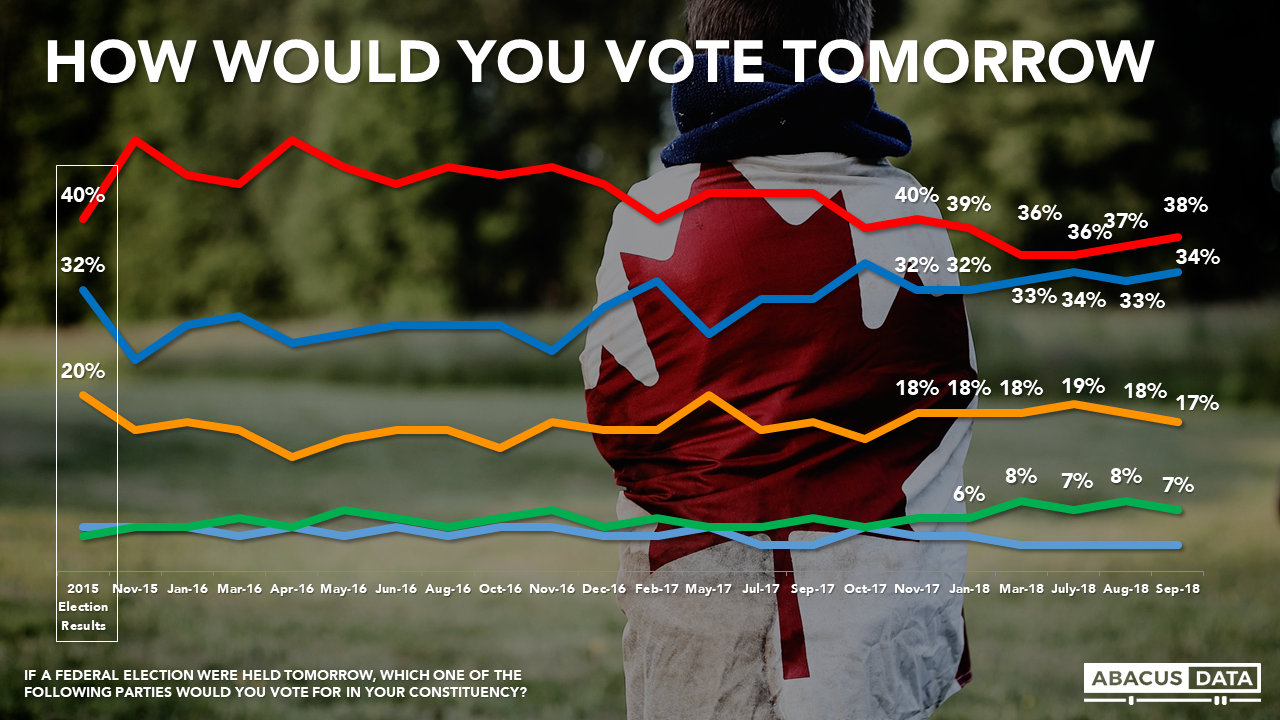
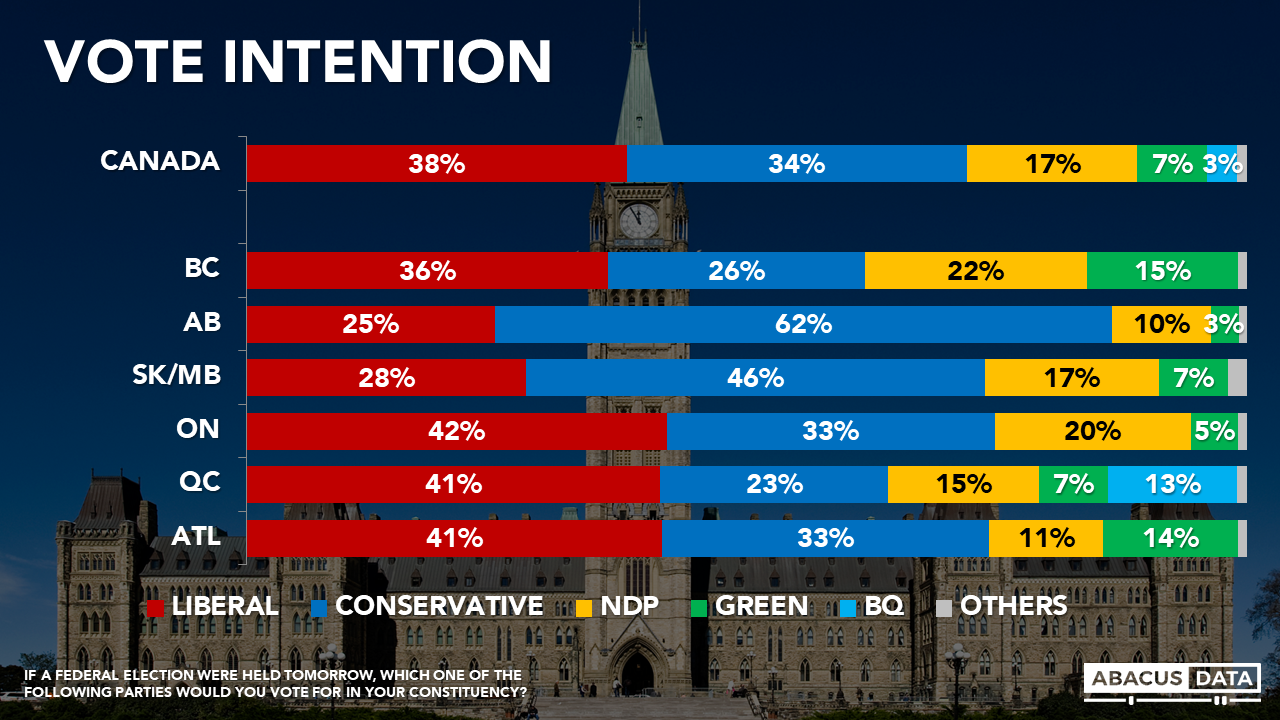

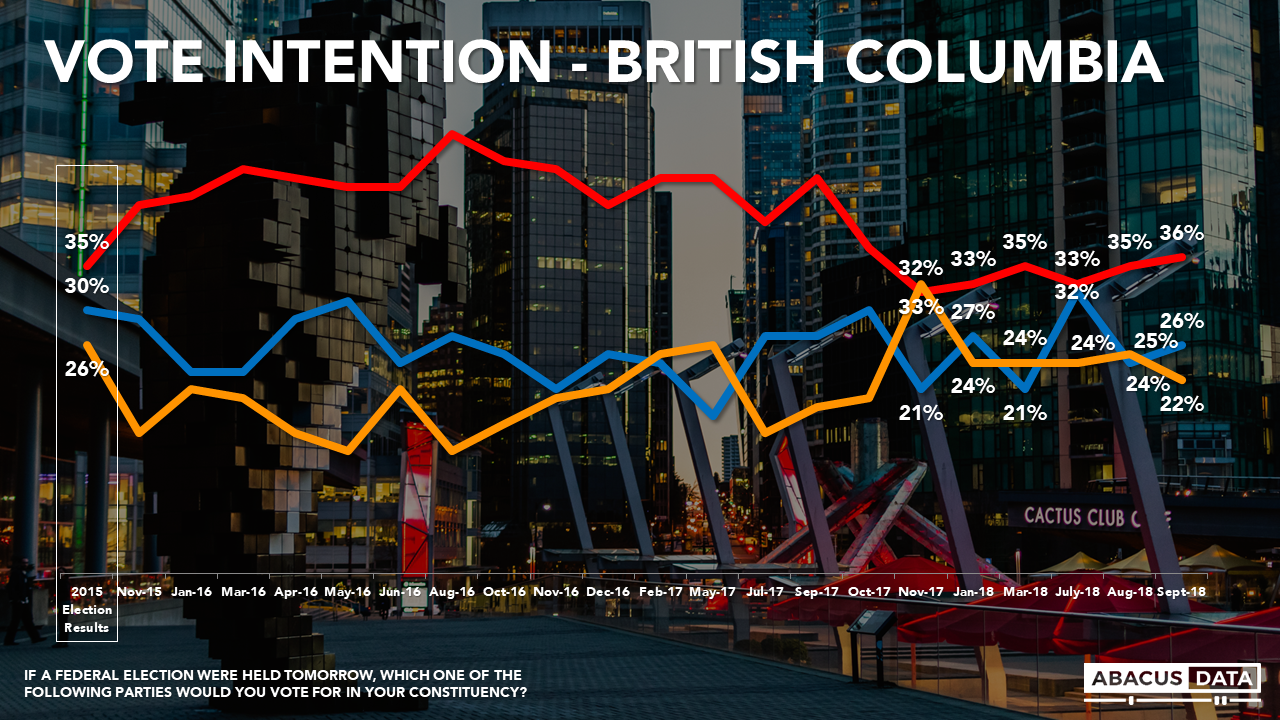

Approval of the federal government performance stands at 44% and has been stable for the last 3 months while disapproval is down to 37% from a high of 41% in late winter/early spring 2018. Approval is 44% or higher everywhere except in the Prairies and stands at 47% in Ontario.
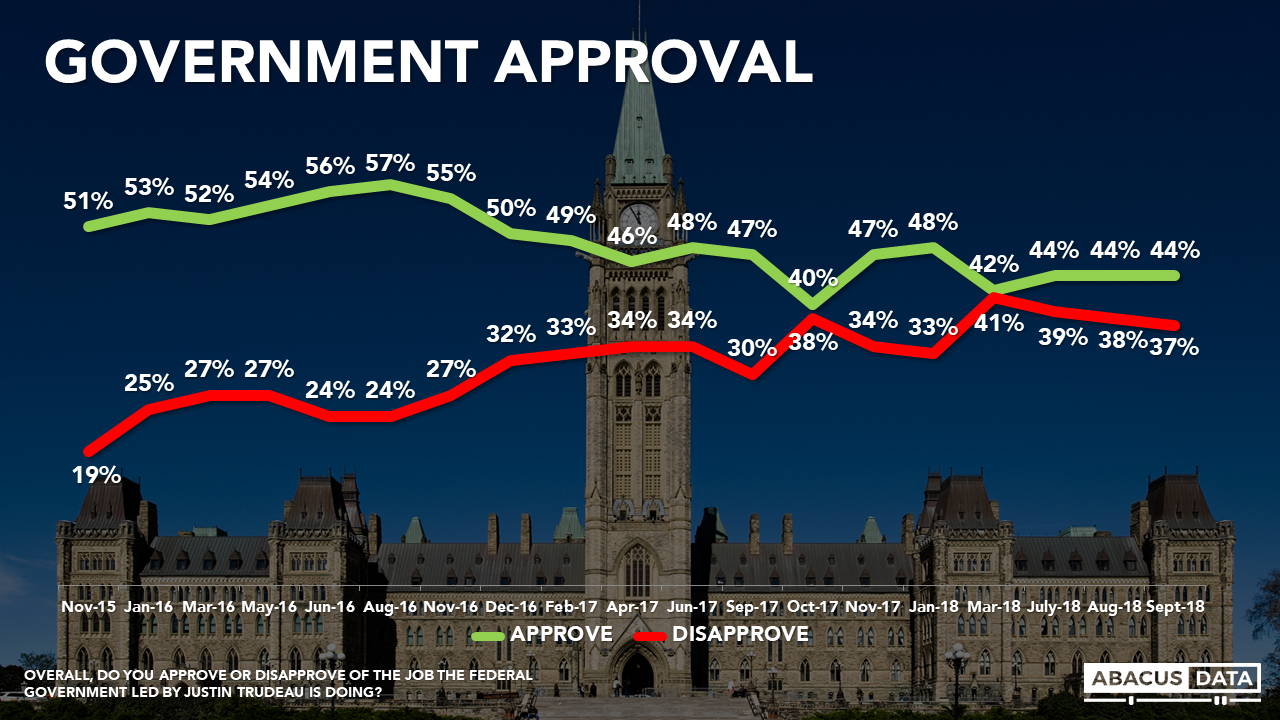
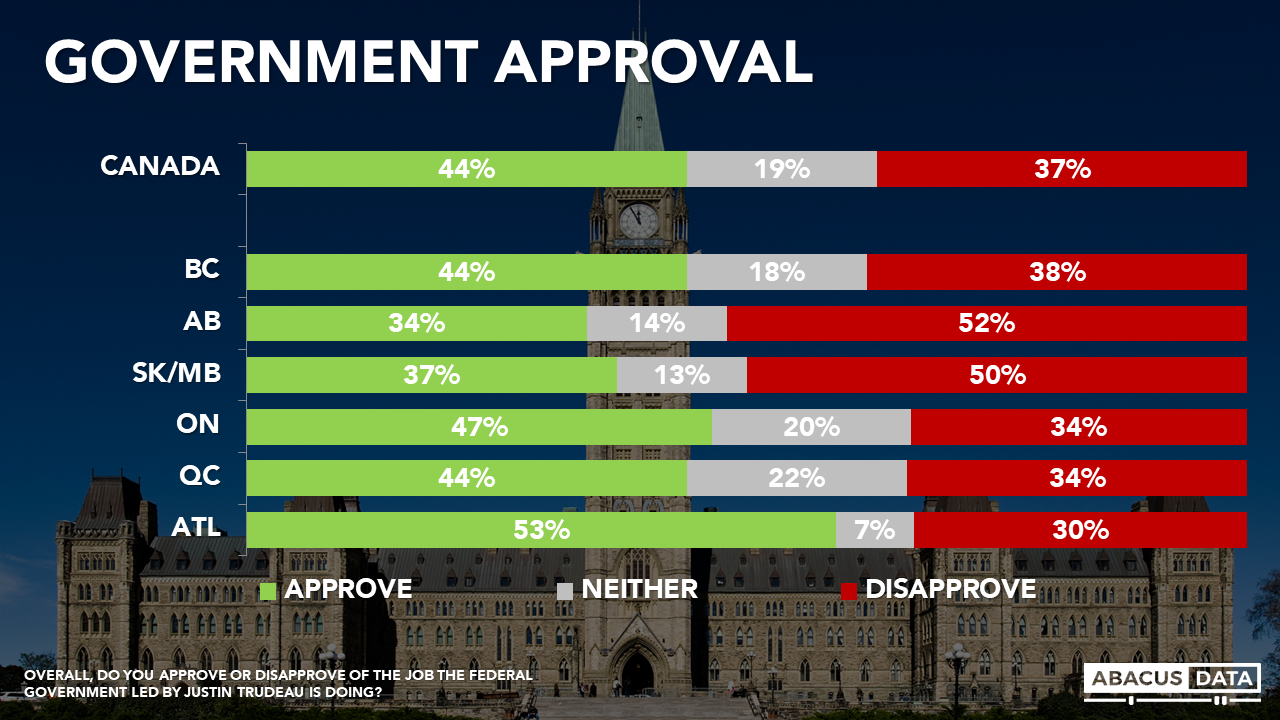
IMPRESSIONS OF POLITICAL LEADERS
As we regularly do, we asked respondents for their opinion of political leaders.
Justin Trudeau elicits 44% positive opinion and 37% negative for a net +7. Again, regional differences are important to note: Mr. Trudeau’s net positive scores are +11 in Ontario, +12 in BC and +15 in Quebec.
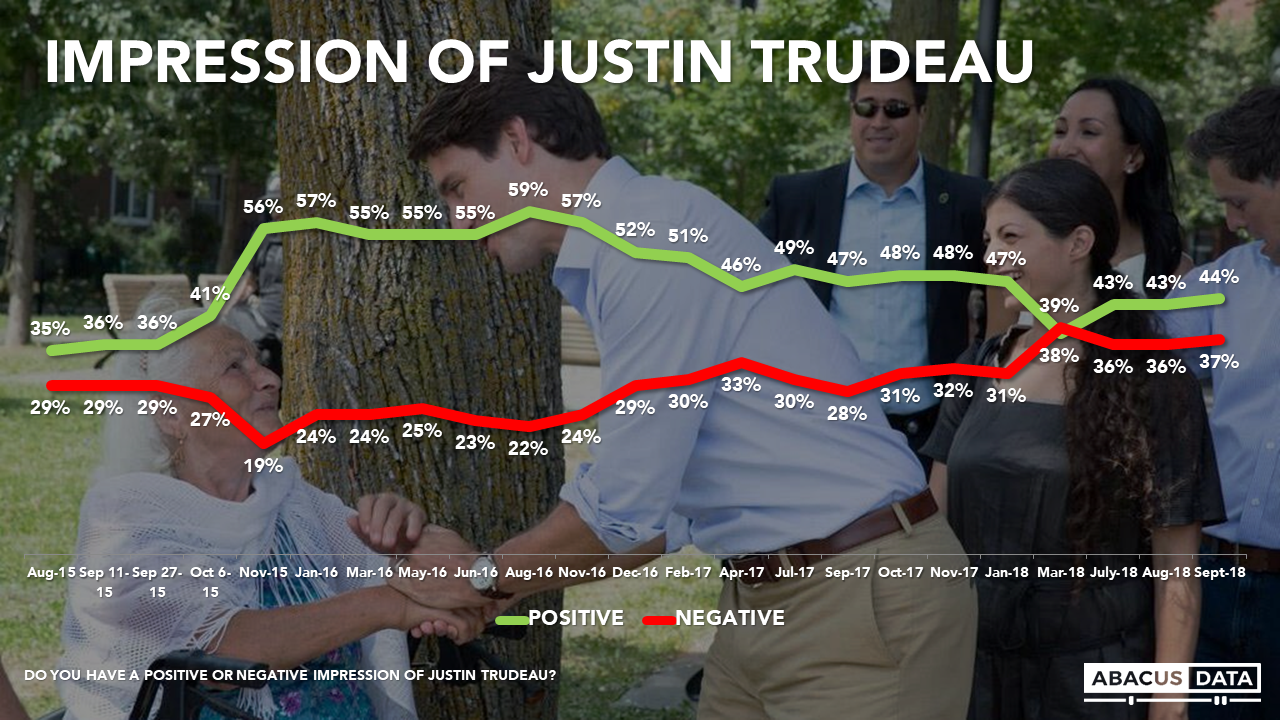
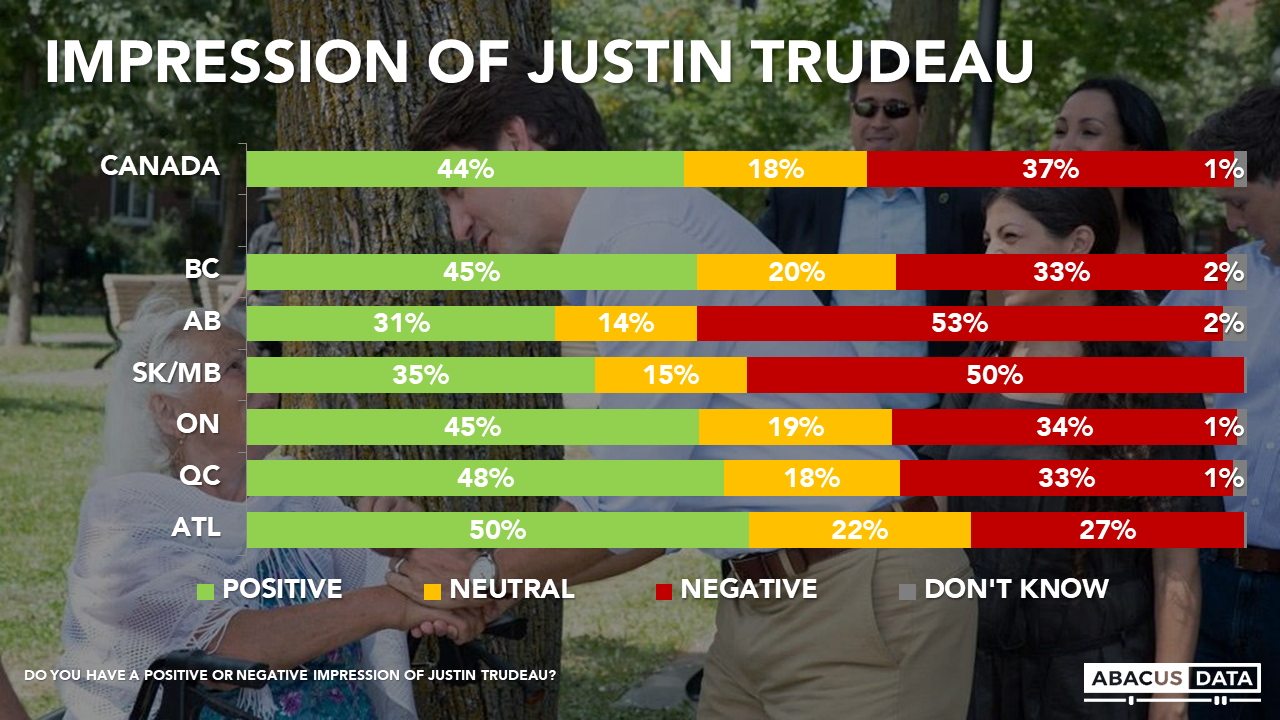
Conservative leader Andrew Scheer has 25% positive and 26% negative opinion (-1). His positives and negatives have both risen by roughly equal amounts over the last year. Mr. Scheer’s numbers are considerably stronger on the Prairies, and softer in BC (-8) and Ontario (-8).
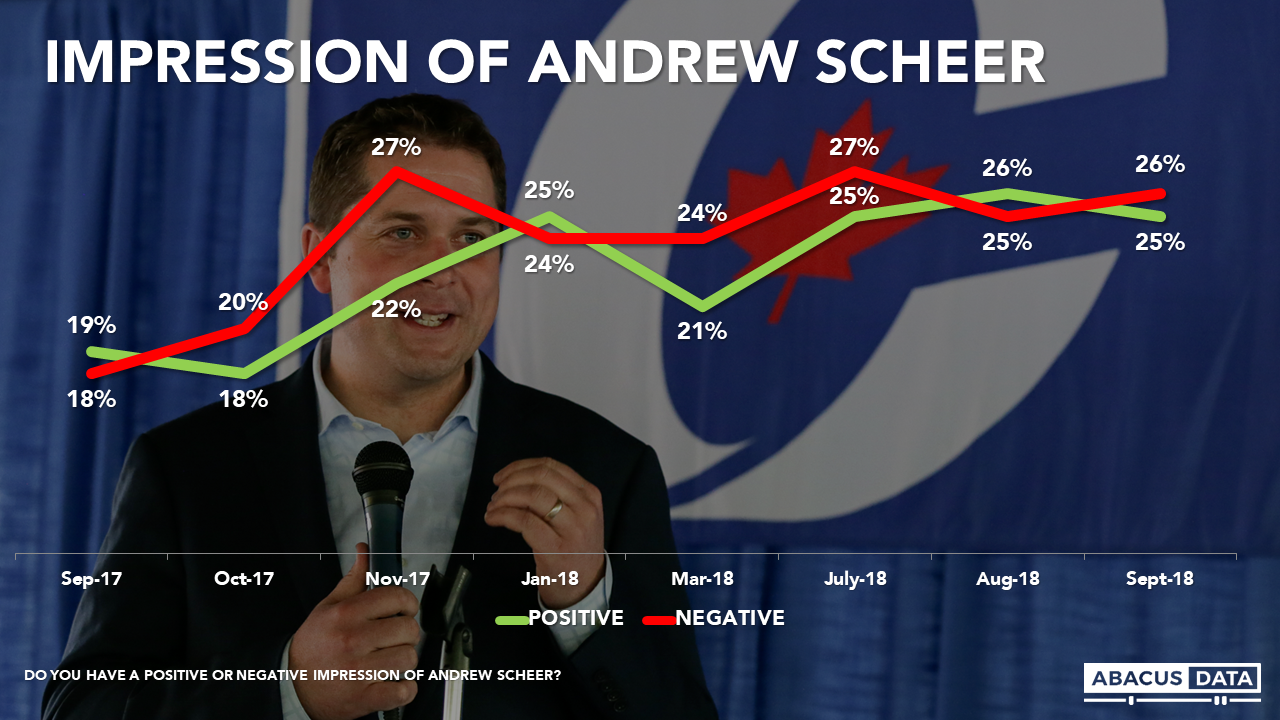
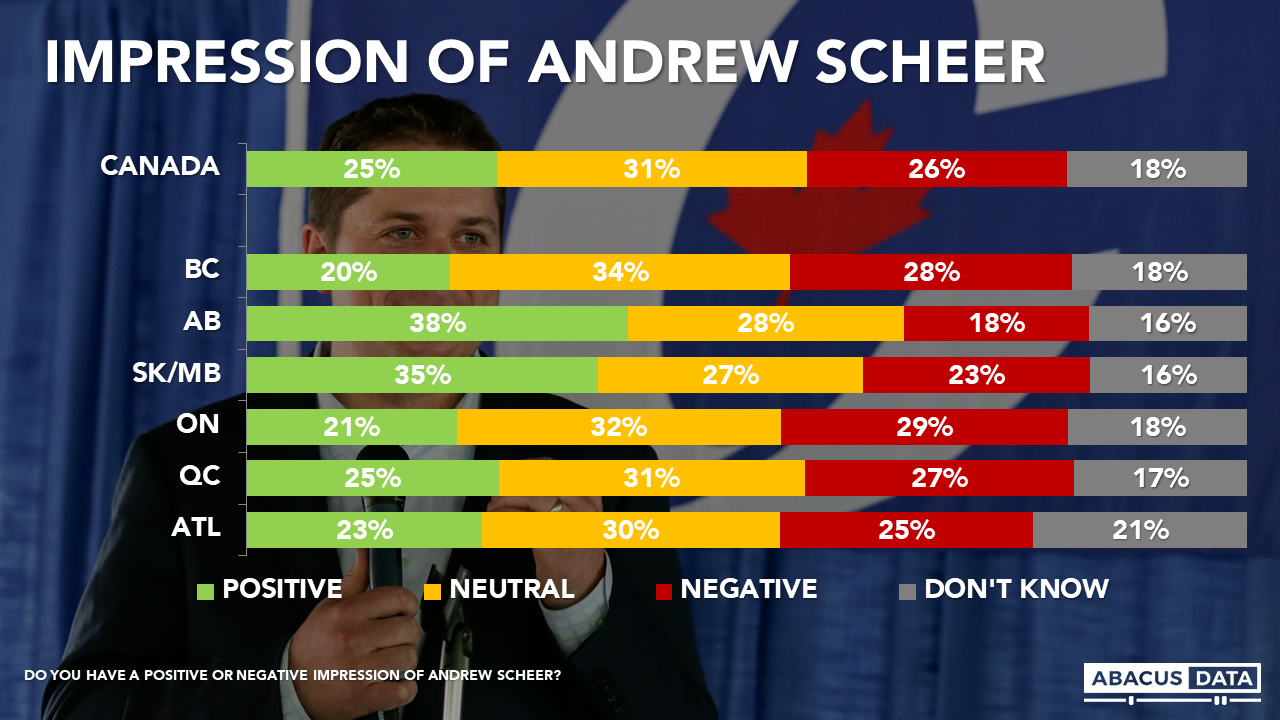
NDP leader Jagmeet Singh finds 20% positive opinion, and 28% negative (-8). Compared to when he assumed the leadership his negatives are 11 points higher, and his positives 2 points higher. Mr. Singh’s negatives are higher than his positives in every region today, including BC where he is running for a seat.
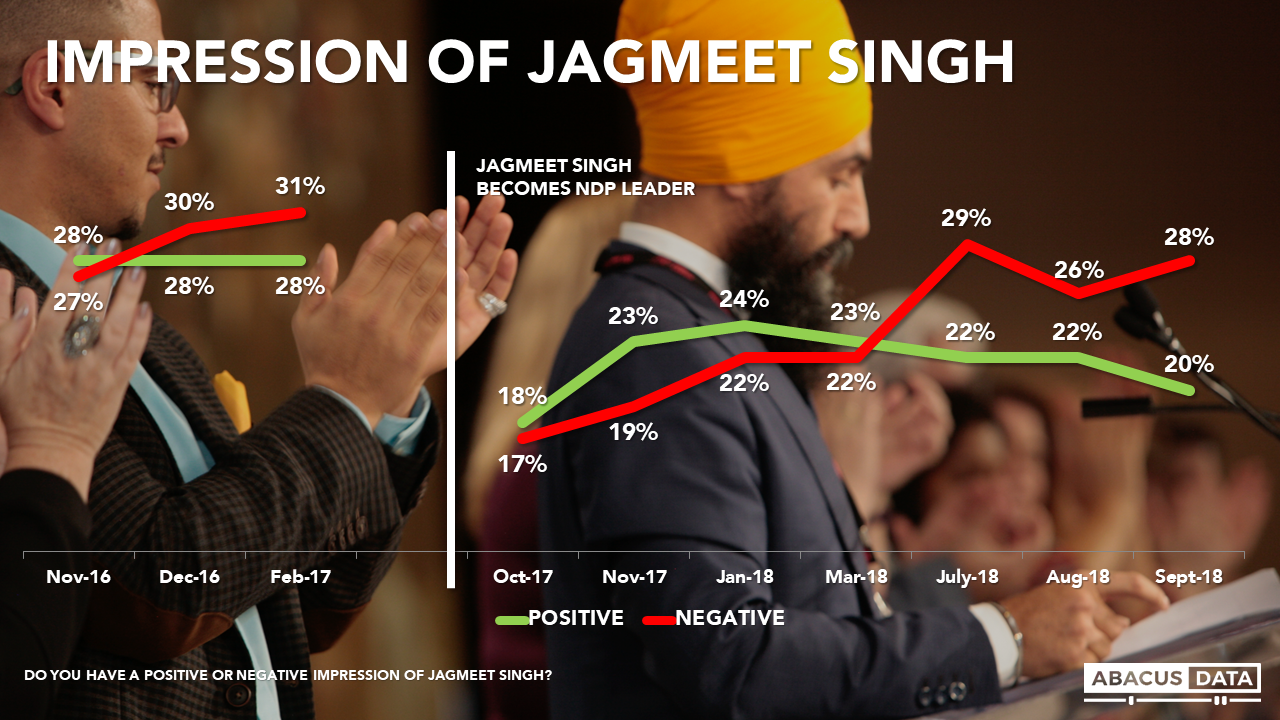
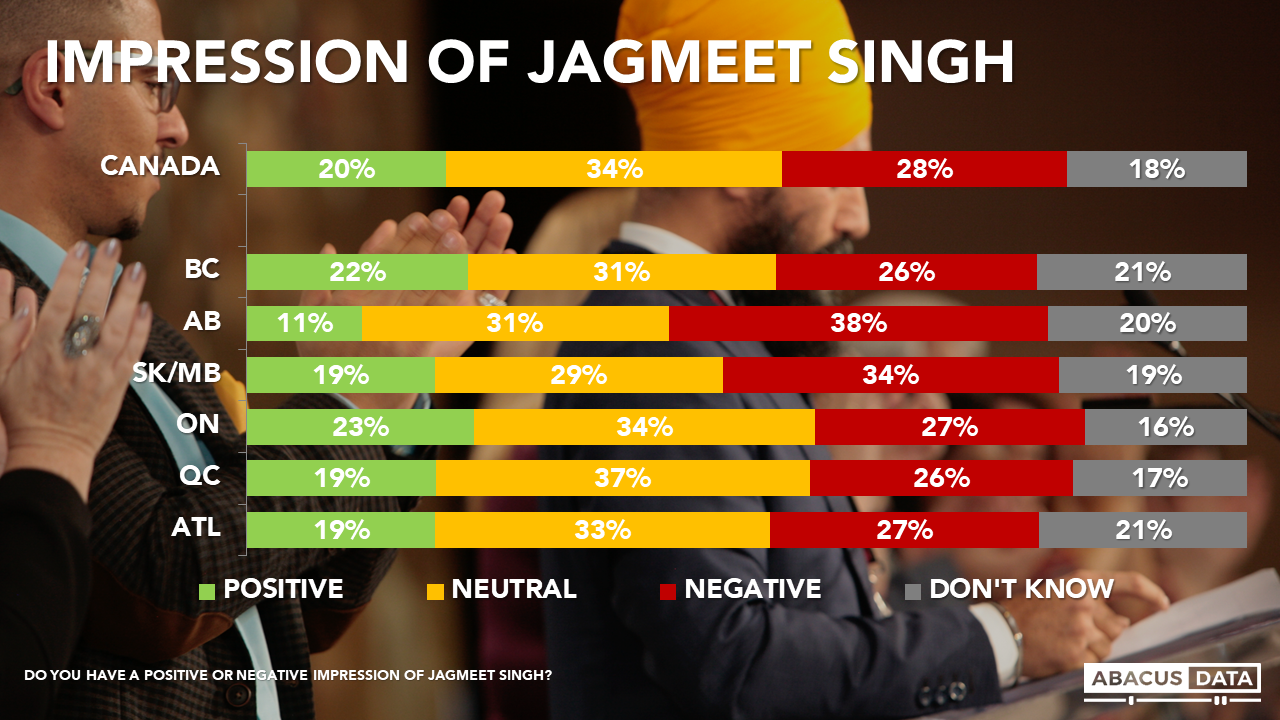
Maxime Bernier, leader of the new People’s Party of Canada, finds 9% positive and 32% negative opinion (-23).
Bernier’s image is starting out negative across the country and among all party voters. While he is more known in Quebec, only 12% of Quebecers have a positive impression of him with 40% have negative views (-28).
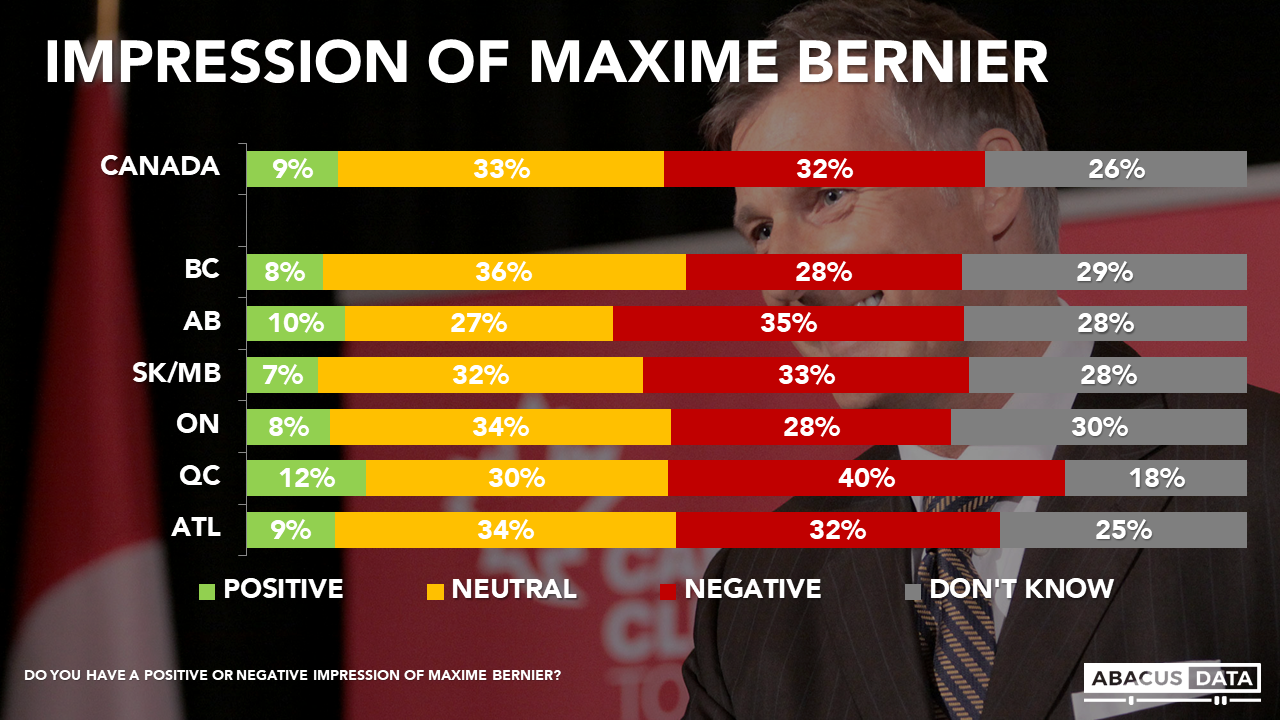
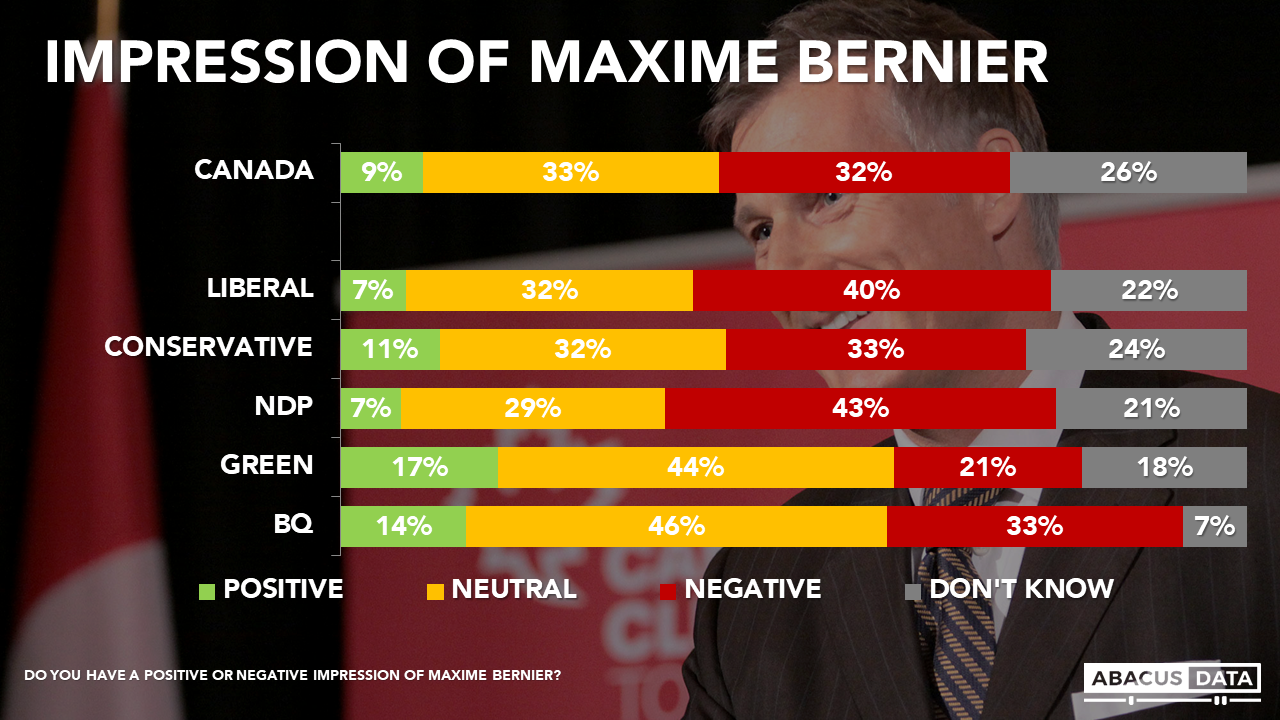
Green Party leader Elizabeth May has 22% positive, 23% negative for a net of -1. In BC, 31% have a positive impression of her compared with 25% negative (+6).

To provide a bit of added context we included popularity measures for Doug Ford (-30), Rachel Notley (-6), Bernie Sanders (+23), Hillary Clinton (+2) and Donald Trump (-71). In Alberta, Ms. Notley is 24% positive – 44 negative (-20). In Ontario Doug Ford is 24% positive – 51% negative (-27).

UPSHOT
According to Bruce Anderson: “Heading into the last election, the Liberals needed to fight for a share of voice against the incumbent Conservatives and an NDP which was the Official Opposition party led by the high-profile Thomas Mulcair.
Today, the Liberals have accumulated some of the scars of incumbency, and the Conservatives don’t have a broadly unpopular leader. But as important as these factors are in creating a different starting point, the biggest X-factor heading into 2019 will be the role of the NDP.
There remain many voters who would consider voting either Liberal or NDP but whose choice will be influenced by whether they warm to the new NDP leader or feel the NDP is competitive in their riding or across the country. These current numbers suggest NDP provincial gains in Ontario have not sparked a broader interest in support for the party at the national level, and a weak NDP in Quebec, Ontario, and BC make for a more promising landscape for the Liberal Party and a bigger challenge for Conservatives to overcome.”
According to David Coletto: “The competitive national race between the Liberals and Conservatives overlooks a tougher provincial landscape for the Conservatives. With large leads in Quebec, Ontario, BC, and Atlantic Canada, the Liberals would likely win another majority government if an election was held today.
Despite a fairly turbulent summer involving the Trans Mountain pipeline, border crossings, and NAFTA negotiations, support for the Liberals has held steady nationally and appears to have rebounded in Ontario after the provincial election. More people like Prime Minister Trudeau than dislike him and the government’s approval rating has held steady since March.
While Andrew Scheer’s Conservatives are in striking distance, competition from Maxime Bernier might complicate his path to victory. For the NDP, there’s still opportunity but impressions of Mr. Singh have become less positive and more negative over the summer months.
The bottom line: as long as the federal government’s approval rating is in the low to mid-40s which it has been since the spring, the Liberals will be tough to beat.”
METHODOLOGY
Our survey was conducted online with 2,000 Canadians aged 18 and over from September 14 to 19, 2018 2018. A random sample of panelists was invited to complete the survey from a set of partner panels based on the Lucid exchange platform. These partners are double opt-in survey panels, blended to manage out potential skews in the data from a single source.
The margin of error for a comparable probability-based random sample of the same size is +/- 2.2%, 19 times out of 20. The data were weighted according to census data to ensure that the sample matched Canada’s population according to age, gender, educational attainment, and region. Totals may not add up to 100 due to rounding.

DETAILED TABLE



